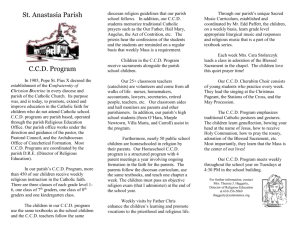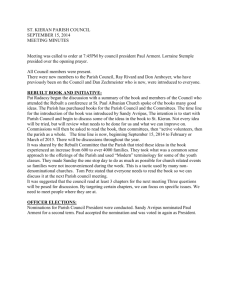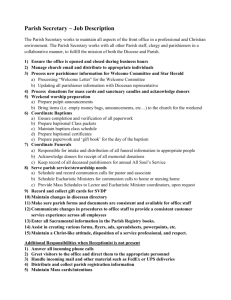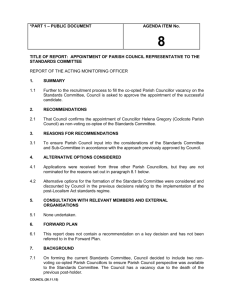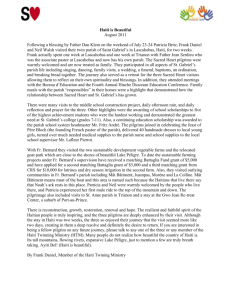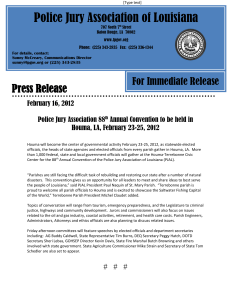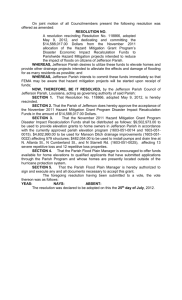COMPREHENSIVE PLAN - South Central Planning & Development
advertisement
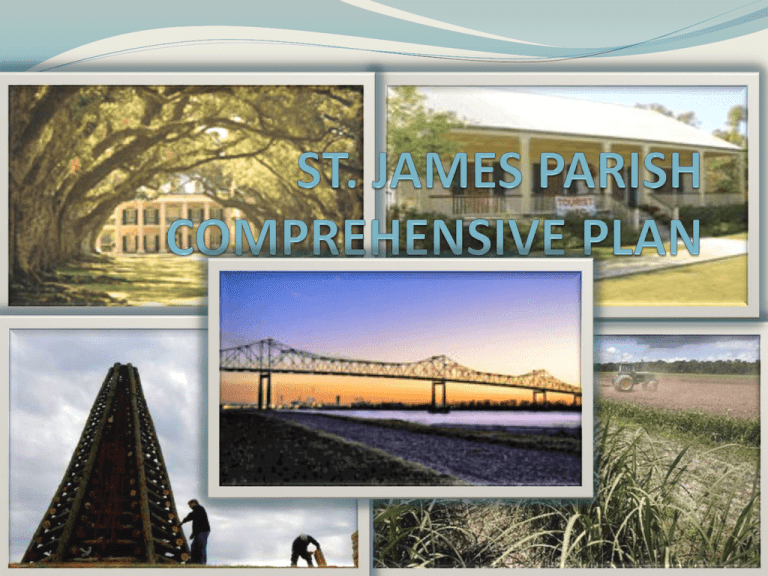
WHAT IS A COMPREHENSIVE PLAN? Comprehensive Plans are devised as blue prints, so that leaders can better plan for social, economic, physical, political, aesthetics, and any other issues that help achieve the community’s goals. WHY PLAN? “When it comes to the future, there are three kinds of people: those who let it happen, those who make it happen, and those who wonder what happened.” John M. Richardson, Jr. People plan to make a special event successful. Businesses plan so their products and services sell. Farmers plan when to plant and harvest. Why shouldn’t communities plan to be successful and sustainable? TOWN PLANNNG HAS AN ANCIENT TRADITION PEOPLE PLANNED EARLY TOWNS TO … Take advantage of resources (water, arable land, etc.), Defend themselves against invaders (defensible positioning of town or walled cities), and Ensure location along trade routes. WHAT DOES A COMPREHENSIVE PLAN PROVIDE It establishes an Overall Community Vision with long term Goals and Strategies to achieve the goals. Plan for public infrastructure and facilities to handle population needs. Protect and enhance the environment, historic structures and special places. Maintain and expand the commercial and economic base. Promote development of housing to meet community needs. Addresses other specific community needs. ADVANTAGES OF AN OFFICIAL COMPREHENSIVE PLAN Planning commission can review and approve plans for consistency with the Comprehensive Plan Local ordinances must be considered for consistency with Comprehensive Plan State agencies must consider the Comprehensive Plan prior to undertaking any activity that would impact it. COMPREHENSIVE PLANS PROVIDE FUTURE INSIGHT Inventories available community assets and resources. Identifies deficiencies and needs. Identifies growth trends and locations where the population is expected to grow. Determines public facility capacity needs to handle growth in these area (roads, water, waste water treatment, schools, etc.). Identifies service needs of a growing population (education, transportation, housing, etc.). CREATES A VISION FOR THE COMMUNITY’S FUTURE Gives elected officials, appointed boards, State agencies and community groups an agenda of steps they can work on to achieve the future. Helps to allocate resources efficiently in order to achieve the vision. Gives direction for expenditure of public funds on infrastructure, services and programs. STEERING COMMITTEE Duties of the Steering Committee … To oversee the drafting of the Comprehensive Plan. To help to obtain public participation in the development of the Plan. To coordinate with the Parish Council and other public agencies pertinent to Comprehensive Plan development. To receive periodic progress reports from SCPDC and deliver to the Planning Commission and Parish Council. To present the Council with a recommended Comprehensive Plan containing direction for implementation. OVERVIEW OF PLANNING PROCESS St. James Parish Planning Council St. James Parish Planning Commission Steering Committee Citizen Participation Meetings PROCESS Inventory parish resources in order to assist in developing an analysis of community strengths, weaknesses, opportunities and threats (SWOT). Form Focus Groups to look at specific issues (infrastructure, public facilities, housing, aesthetics/community design, land use). Develop a vision statement for the future. Develop goals and objectives necessary to achieve the vision. PROCESS CONTINUED … Develop strategies and identify possible tools to use in accomplishing the goals. Identify which implementation tools are appropriate for St. James Parish. Draft a plan that includes all of the required and appropriate elements. Hold public hearings. Present final recommendations to the Planning Commission and Parish Council. FOCUS GROUPS PUBLIC INFRASTRUCTURE Where do we have or need sewerage, drainage, transportation, water, etc.? PUBLIC FACILITIES AND SERVICES Where and what kind of facilities and services do we need to serve the present and future population? (public health clinics, public safety services, libraries, parks, educational, etc. HOUSING What is available and is it attainable for ownership or rental? What is the quality and cost of housing? AESTHETICS AND COMMUNITY DESIGN What do we like about our community and want to preserve? What do we want to change and improve? LAND USE Where and what kind of development is here today and what is planned? INVENTORY: WHAT TYPE OF INFORMATION IS NEEDED? Population and growth trends. Planned and proposed developments and public works projects. Infrastructure capacity assessments. Maps of population densities, resources, existing land uses and other pertinent information. Identify resources and assets. Human resource and economic needs. SWOT ANALYSIS STRENGTHS What makes our community work? WEAKNESSES What’s holding us back from achieving our shared goals? OPPORTUNITIES What’s in the future that will help us reach our community vision? THREATS What challenges do we face in realizing our vision? This will be a guided process and will occur as part of the Focus Group meetings PLAN CONTENT Maps, plats, charts and descriptive matter, and Recommendations from Focus Group meetings for the future development of the community. Expressed in terms of … A vision statement for the future of St. James Parish Goals and objectives necessary to achieve the vision Appropriate strategies and tools to use in accomplishing the goals IMPLEMENTATION: TYPICAL TOOLS Regulatory Codes Floodplain Management Code Subdivision Codes Building Codes Land Use Regulations Aesthetic, Historic And Other Codes Capital Planning Federal, State And Nonprofit Grants Partnerships Between Governments, Nonprofits And Private Businesses Local Revenue Initiatives Tax and Business Incentives For Economic Development EXISTING ST. JAMES PARISH IMPLEMENTATION TOOLS Floodplain Management Code Various Nuisance Abatement Codes Land Development (Subdivision) Code Communication Tower Regulations Solid Waste and Substances State Building Codes Fair Housing and Minimum Housing Regulations State Tax Incentive Programs SCPDC Revolving Loan Program OTHER IMPORTANT POINTS Steering Committee meetings are open to the public. Periodic updates will be available on a website, at the Parish office and at the Parish library. There will be a public hearing on the draft plan. The plan may be published in parts by element or geographic area. TIME FRAME Initial Steering Committee Meeting March Steering Committee meets & organizes April- May Kick Off Meeting June Focus Group Meetings July Draft Plan January Public Hearings February Revisions of Document March Final Document to SC April- May Delivery of Document to Planning Commission and Parish Council June- July CONTACT INFORMATION & RESOURCES SOUTH CENTRAL PLANNING AND DEVELOMENT COMMISSION WWW.SCPDC.ORG P. O. BOX 1870 GRAY LA. 70359 985-851-2900 AMERICAN PLANNING ASSOCIATION WWW.PLANNING.ORG QUESTIONS?




